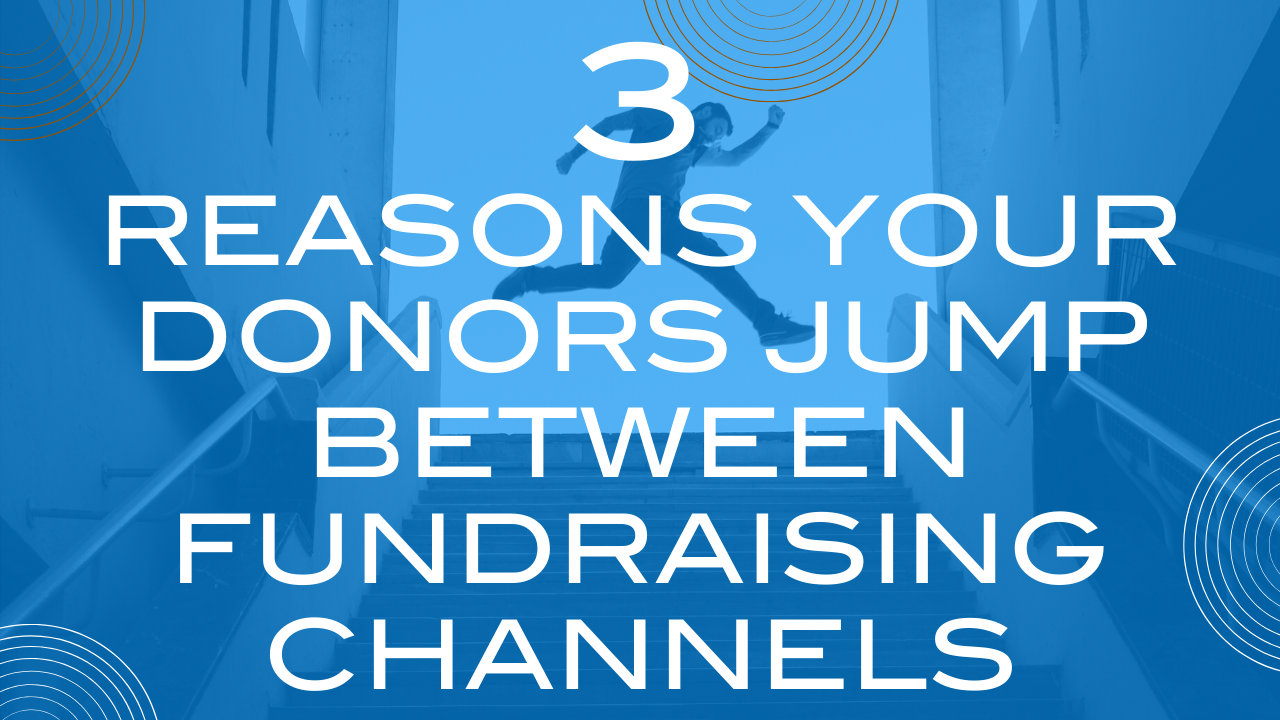
3 Reasons Your Donors Jump Between Fundraising Channels
Jun 08, 2020As marketers and fundraisers, sometimes our tendency to put donors in a box can work against us. We define donor profiles (one box), we invest in specific fundraising channels (another box), and we often give attribution to the last-touch channel that acquired the gift (yet another box). We put donors in boxes because it helps to corral planning and donor communication. It helps us go deeper in relationships with donors by channel. And it helps us report “what’s working” in fundraising to our boards and stakeholders.
The truth is that donors do not live in a box. They are like you and me. People, not donors. They are human beings who are influenced to give by many factors and don’t care about the box you put them in. They aren’t looking at your organization saying, “I’m a direct-mail donor” or “I’m a digital-only donor.” Donors just want to make a difference. They will send in a check, donate online, and give via SMS. They do this because your organization has a marketing presence in these channels and because they care about your cause.
I’m always cautioned when an organization wants to cut investment in digital, direct mail, or telephone fundraising because their approach then becomes hyper-focused on a specific channel. The fallacy is to look at ROI by channel without looking at ROI with all channels combined. What I've often seen is that investment in digital increases direct mail revenue and vice versa. If ROI is higher in digital, it doesn’t necessarily mean you should invest more in digital and decrease investment in direct-mail fundraising. Surprisingly, many “digital donors” also make gifts in direct mail.
In addition, I’ve seen cases where Facebook ads appear to have a negative ROI, but digital revenue has increased significantly. This is because Facebook ads and other forms of online media influence giving in digital overall, but may not have a high direct-response rate. When I’ve cut Facebook ad budgets for clients, I’ve also seen a decrease in overall digital revenue. Interestingly enough, when organizations have cut digital fundraising investment, we’ve observed a decrease in direct-mail revenue as well. Why does this happen?
The myth is that channel-specific donors only give in that channel. The truth is that donors jump between channels.
Here are three reasons why this occurs:
- Donor Giving Preferences
The box that we put donors in, categorizing them as a direct mail or digital donor, is really a matter of donor preferences. You may have a 72-year-old donor that prefers to give by check, and tends to do so a majority of the time. However, this donor may also give a message by phone or make a gift online in response to an email. They may prefer direct mail, but they jump channels outside of their preferences as well. - Donation Convenience
How far away is your phone vs. your checkbook vs. your computer? I’m a Gen Xer. I’m not a digital-only donor. I’ve given gifts by text, check, and online to the same organization in the same year. You send me a mail piece, I might go online and give … but I also might write a check. This may depend on what I’m doing when I donate. I still use checks for a few of my bills, and I might write one to your organization as I’m paying bills because it’s convenient to do it all in one swoop. At the same time, if I get an email or text from your organization, I might just pay it then while I’m thinking about it. I don’t have a preference, I just give by what’s convenient at the time. I’m not too different from many of your donors. - Level of Comfort by Giving Channel
Some of your donors are younger and don’t use checkbooks often. They’ve been transacting business online and through mobile devices for years. On the other hand, you have donors that handle their finances predominately by check. Both of these groups may also use EFT for bills and donations. Both of these groups are more comfortable with their methods of giving. This doesn’t necessarily mean it’s their preference. Some donors who write checks would prefer to give online, but they aren’t comfortable doing so. They’ll still jump into online giving once in a while, though they are more comfortable writing checks. Disaster donations are a great example of this, or year-end campaigns when there is urgency for gifts to be credited by December 31.
You may notice that when it comes to fundraising, a rise in tide lifts all ships. The tide is the combination of all fundraising channels working together. The lifting of all ships is the increase of impact your organization makes when fundraising is working at its best. When examining the tide, it gets the credit for its impact as a whole, and can be measured against the size of the previous tide. It is the result of many rivers (fundraising channels) coming together. By measuring the performance of each river, it’s easy to overlook the size of the tide that all rivers have created together. All rivers are important and play a role, but the ROI of your fundraising is best measured by the tide, not the rivers.
Donors jump between channels, so it’s important to have a continued presence and awareness in multichannel fundraising strategies that cater to their preferences, conveniences, and level of comfort of giving to your organization.
So my question to you: Are you attributing multi-channel campaign ROI success at an overall campaign level or are you deeming it a success by individual marketing channels?
Don't miss a beat!
New nonprofit fundraising and marketing tips + personal development delivered to your inbox.
I hate SPAM. I will never sell your information, for any reason.

